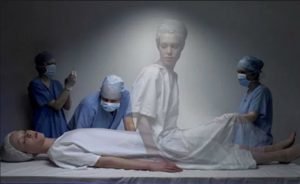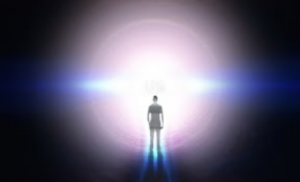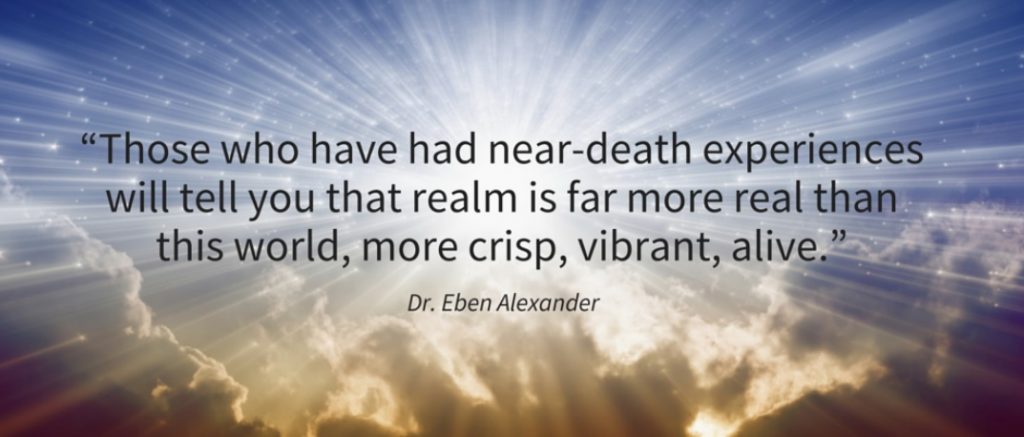 David is a 33-year-old tech writer from San Francisco. After having had a Near-Death Experience, he is starting to discover that there’s more to life than he could have ever imagined and is now doubting about everything he thought he knew. He stumbled upon various blogs and decided to write an article about NDE facts and curiosities. He invites all those who have had similar experiences to respond to this article via the comments box below.
David is a 33-year-old tech writer from San Francisco. After having had a Near-Death Experience, he is starting to discover that there’s more to life than he could have ever imagined and is now doubting about everything he thought he knew. He stumbled upon various blogs and decided to write an article about NDE facts and curiosities. He invites all those who have had similar experiences to respond to this article via the comments box below.
Near-Death Experiences: What People Report about what happens after you die
Anywhere from four to 15 percent of people will have what is referred to as a near-death experience (NDE). This translates into 774 such experiences every day. And, fully, a quarter of these experiences happen to people who were clinically dead and who were later revived.
While there is disagreement about whether an NDE is an actual glimpse into life after death, those who have these experiences genuinely believe that they have been given insight into the afterlife. And nearly all of them undergo profound and positive lifelong change as a result.
These facts beg the question: What do people who undergo an NDE, report back about their experiences? And are there any commonalities that can give us clues into what the process of dying is like? While no two near-death experiences are the same, there are some similarities and themes we can look at.
Many people who were clinically dead and then revived, report leaving their bodies and surveying the scene from afar.
One relatively common theme surrounding those who were clinically dead and then revived is an out-of-body experience. This is an experience whereby the person leaves their body and can see what is happening to, and around them, from afar. For example, one child felt himself standing on the side of the pool where he had drowned watching the lifeguards pull him out of the water. Someone else saw himself in the ambulance while the EMTs worked on him.
 One inexplicable aspect of some of these out of body experiences is that the person can sometimes accurately recall details from the time that they were dead. For example, one person remembered the bright green hair of an EMT (emergency medical technician). Someone else recalled conversations that had occurred between nurses and doctors during a surgery. Some have decided to have their bodies turned into a cremation diamond after they die. Others are able to accurately describe their surroundings or recall where their possessions were placed while they were clinically dead.
One inexplicable aspect of some of these out of body experiences is that the person can sometimes accurately recall details from the time that they were dead. For example, one person remembered the bright green hair of an EMT (emergency medical technician). Someone else recalled conversations that had occurred between nurses and doctors during a surgery. Some have decided to have their bodies turned into a cremation diamond after they die. Others are able to accurately describe their surroundings or recall where their possessions were placed while they were clinically dead.
A bright light is often, but not always, part of a clinically dead person’s experience.
The bright light beckoning to the individual is, perhaps, the most famous element of a near-death experience. And, many people do report seeing a bright light during their NDE. The exact nature of this light can vary from person to person. For example, one individual described it as a warm light surrounding him and getting brighter. Another described it as a giant wall of intense brightness. Usually, this light is accompanied by a sense of warmth or a sense of peace.
In many cases, on the other hand, those who are clinically dead and then revived do not see a light. In fact, some people have an opposite experience: They undergo a dreadful period of deep darkness, terror, guilt, and other extremely negative emotions. While in the minority, this type of experience happens enough to be considered one of the common characteristics of an NDE.
Strong, and usually positive, emotions accompany a clinically dead person’s near-death experience.
As mentioned above, a sense of peace or calm, or opposite emotions such as fear and guilt, are frequent companions during a clinically dead person’s near-death experience. What each of these people’s accounts has in common, regardless of the type of emotion they felt, is its strength.
 For example, most of the time, the person feels a deep sense of happiness, peace, or calm. Some people describe it as a feeling of having come home. So welcoming is this feeling that sometimes they actively wish to remain in their clinically dead state. Those who experience negative emotions also feel these emotions very strongly. Their fear becomes terror; their uncertainty guilt. It is in part the strength of these emotions that allows them to linger, vivid, in the person’s mind long after they are revived.
For example, most of the time, the person feels a deep sense of happiness, peace, or calm. Some people describe it as a feeling of having come home. So welcoming is this feeling that sometimes they actively wish to remain in their clinically dead state. Those who experience negative emotions also feel these emotions very strongly. Their fear becomes terror; their uncertainty guilt. It is in part the strength of these emotions that allows them to linger, vivid, in the person’s mind long after they are revived.
Encountering familiar people, either alive or dead, during their near-death experience is a common theme for those who have clinically died and then been revived.
One person saw a friend, still living and from whom he was estranged, during a near-death experience. Somebody else saw a group of old friends and family who had passed away sitting in a circle. Others have heard familiar voices or felt a motherly presence. Encounters of this kind serve as a uniting theme for many people who were clinically dead and then revived.
What these people say and do varies according to the experience. Often, however, part of their exchange includes reassurances from the familiar person that all is well, or a refusal to allow the clinically dead individual to remain or to follow them. Instead, this familiar person often becomes the force that pushes the person back toward consciousness.
Most people who have been clinically dead and then revived demonstrate permanently changed lives as a result of their experience.
Finally, many of the people who come back from being clinically dead and from having an NDE are changed as a result. They find that their experience feels entirely real, far more real than what people undergo when they are on drugs or hallucinate. And, they retain vivid memories of the experience that also help to direct and guide them the rest of their lives.
One of the most common and biggest changes that these NDEs bring about in individuals is a sense of peace about death. Even those who feared death before their experience lose all apprehension about death afterwards. At times, the person might come to believe in an afterlife when they did not previously, or undergo other changes in their priorities and values as a result of what they believe to be a glimpse into life after death.
Near-death experiences are powerful events for those who undergo them. The intensity, strangeness, and frequency of these experiences leave them a medical and scientific mystery, even as those who undergo them come back permanently changed by what they believe is an encounter with the afterlife.




